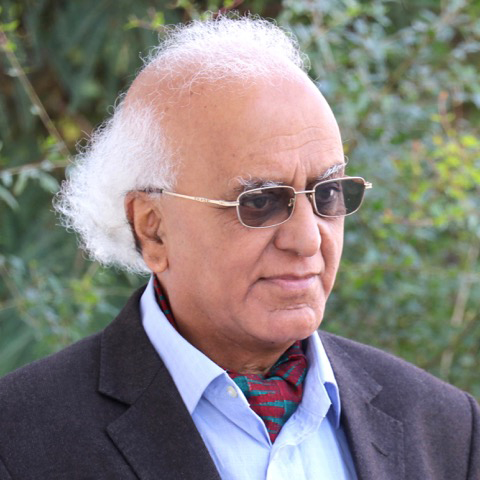Columns
Nepal, Catch-22 and history
Those entrusted to uphold the constitution have forsaken the principles of the present system.
Abhi Subedi
This article has two parts. The first is about Nepal being caught in a Catch-22 situation created due to the executive, the legislative and the judiciary not working by honestly adhering to the principles of the separation of power as laid down in the democratic-republican constitution of Nepal 2015. The second is about the stakeholders' failure to interpret the lessons of history correctly. The result is the growing confusion in all the above areas.
Catch-22 means a situation in which your actions invite problems, not solutions, and you let that state continue at the cost of blurring any future solutions to the issues in different areas of action. I have taken a literature-oriented approach to make some observations about the situation of present-day Nepal that is the result of the compelling political, legal and economic developments taking place at a rapid pace. An American novelist Joseph Heller invented the title Catch-22 for his famous novel published in the year 1961. The publication of this novel coincided with the swearing-in of John Kennedy as president of the United States of America. That was a period of the Cold War between the US and the Soviet Union.
Conversely, with the rise of the creative movements and great experiments in music and literature worldwide, the period was also known for a few land-marking developments. One of them was the evolution of a methodology of binary studies that grew due to the discussions about the duality of values caused by the very state of the Cold War. The binaries between grotesque and serious, problems and solutions, and broadly war and peace dominated the thinking patterns. Many people in the world were divided into the camps of the competing ideologies of communism and what was called 'the free world'. Even communism had a binary pair called socialism, which represented an imagination about developing a welfare state based on equality and egalitarianism. Politicians like Jawaharlal Nehru of India, Bishweshwar Prasad Koirala of Nepal, and leaders of the Non-Aligned group and activists of the Socialist International were the exponents of socialism.
Heller's novel Catch-22, with the theme of World War II, was considered as the allegory of the uneasy condition of choice between two options. Without going into the discussion, I only want to allude to the meaning of Catch-22 when it made its way into the English dictionaries. The semantics of this term is the dilemma of your choice. That is, choosing one option is no solution to your problem; you have to face the results for your choice, which means that you are caught in a fix by choosing, as the protagonist of the novel Yossarian and his comrades. In other words, you have no option other than making one choice, which is also your dilemma. I find Catch-22 the appropriate term to explain the challenges Nepali politics and constitutional bodies face today. We are getting inundated every day by the news of the evolution of that situation. Similarly, discriminatory policies of those in power and corruption being a norm on all fronts have become a common experience for people today. What went wrong in the state of Nepal then?
Modern Nepali history, which is not yet appropriately written, took significant strides in the last 30 years or so. The principal players of those tumults were or have been the political parties of Nepal. They are guided by the political ideologies known in common parlance as communism and democracy. These two terms are not binary pairs; they are opposite principles of social change, economic management and restructuring of the state. Communists have had tremendous influence in Nepali society for over half a century. They made a colossal rise in politics and society in general. But those who espoused democratic values like the old Nepali Congress party have also maintained their strong presence and influence in the society. The communists have always claimed that the Marxist-Leninist principles of social change and the restructuring of the society have guided them. They have attempted to write their accounts in their histories.
However, Nepali historians and researchers are alerting those who want to evoke history to define their actions in the present carefully. For example, Mahesh Raj Pant, a veteran historian and free scholar, is alerting researchers and interpreters to be more cautious and meticulous about the writing and interpretation of history. Pant does so without any inclination towards any one mode of interpretation. The late Mahesh Chandra Regmi's methodology of historical study has its message. Pratyoush Onta, a historian of the new generation, has been stressing the accurate and free interpretation of history. Communist ideologues espouse different strands of Marxist thoughts and coin names for their organisations. It is easy to see how many names they have developed by listing the names of the different communist parties of Nepal. The Maoist communists launched a war with the state from 1996 to 2006. The Nepali Congress reiterates the lingo developed and introduced by the leader BP Koirala. They carry the binary of socialism and social democracy as their guiding principles.
I want to conclude this short article by making the following argument. A unique feature of modern Nepali history is the continued and active existence of all the political parties mentioned here. The most spectacular part is the grand political agreement—Comprehensive Peace Agreement—signed by the Maoists and seven other parties on November 21, 2006. The present federal republican constitution 2015 clearly defines the role of the executive, the parliament and the judiciary under the principle of the separation of power. There is no point in repeating that the constitution is functioning.
But the cause of the present imbroglio is that those who are supposed to work honestly to keep up the spirit of the constitution appear to be inclined to forsake the very principles and the spirit that created the present system. Together these separate bodies create a Catch-22 situation in which choosing one option means moving into a deadlock. As an optimist, I would say the Nepali people, as always, would learn a great lesson even from the present imbroglio with the unstable judiciary, rowdy parliament and the executive caught in the Catch-22 situation.




 18.12°C Kathmandu
18.12°C Kathmandu















